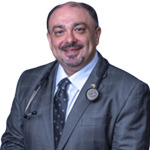Managing Dual Diagnoses: Addiction and Co-occurring Mental Health Disorders
The intersection of addiction and mental health disorders creates a complex challenge for individuals and healthcare providers alike. Known as dual diagnoses or co-occurring disorders, this condition refers to the simultaneous presence of a substance use disorder (SUD) and a mental health disorder such as depression, anxiety, bipolar disorder, or PTSD.
Dual diagnoses are more common than many realize. According to the Substance Abuse and Mental Health Services Administration (SAMHSA), approximately 50% of individuals with a mental illness will experience a substance use disorder in their lifetime, and vice versa. Despite this high prevalence, many individuals face barriers to receiving the comprehensive care they need.
Addressing dual diagnoses requires an integrated approach that treats both conditions simultaneously. This article explores the complexities of dual diagnoses, highlights the importance of early detection, and outlines effective strategies for long-term recovery.
Understanding Dual Diagnoses
What Are Dual Diagnoses?
Dual diagnoses occur when a person experiences both a substance use disorder and a mental health disorder. These conditions often interact in ways that exacerbate one another, creating a cycle that can be difficult to break without professional intervention. Examples of dual diagnoses include:
- Alcohol addiction and major depressive disorder.
- Opioid dependence and generalized anxiety disorder.
- Cannabis use disorder and schizophrenia.
Each case is unique, with the severity and interaction of disorders varying from person to person. What remains constant is the need for comprehensive care that addresses both conditions.
The Bidirectional Relationship
The connection between addiction and mental health disorders is complex and bidirectional:
- Mental Health Disorders Leading to Substance Use:
- Individuals with untreated mental health conditions may turn to drugs or alcohol as a form of self-medication to alleviate symptoms such as anxiety, depression, or trauma-related distress.
- For example, someone with social anxiety might misuse alcohol to feel more comfortable in social situations.
- Substance Use Triggering or Worsening Mental Health Issues:
- Prolonged substance use can alter brain chemistry, increasing the risk of developing psychiatric disorders. For instance, chronic stimulant use is associated with heightened anxiety and paranoia.
- Substance withdrawal periods can mimic or exacerbate symptoms of mental health disorders, creating challenges for diagnosis and treatment.
Stigma and Barriers to Treatment
Individuals with dual diagnoses often face unique challenges in accessing care:
- Social Stigma:
- Stigma surrounding mental illness and addiction can discourage individuals from seeking help. Fear of judgment or discrimination may lead people to hide their struggles, delaying diagnosis and treatment.
- Fragmented Healthcare Systems:
- Historically, addiction and mental health services have been treated as separate fields, leading to gaps in care. Patients may find themselves navigating multiple providers without receiving coordinated support.
- Misdiagnosis and Lack of Awareness:
- The overlapping symptoms of substance use disorders and mental health disorders can complicate diagnosis. For example, irritability and mood swings may be attributed solely to addiction, overlooking an underlying mood disorder.
Understanding the prevalence and impact of dual diagnoses is the first step toward breaking down barriers and providing effective care.
Recognizing the Signs and Symptoms
Identifying dual diagnoses is a critical step toward effective treatment and recovery. However, the overlapping symptoms of mental health disorders and substance use can make diagnosis challenging. Recognizing the signs early can lead to timely intervention and better outcomes.
Signs of Substance Use Disorder
Substance use disorders (SUDs) manifest through physical, behavioral, and psychological changes. Common indicators include:
- Behavioral Signs:
- Increased secrecy or isolation.
- Neglect of responsibilities at work, school, or home.
- Risky behaviors, such as driving under the influence or unsafe sexual practices.
- Physical Symptoms:
- Changes in appetite or sleep patterns.
- Unexplained weight loss or gain.
- Bloodshot eyes, tremors, or slurred speech.
- Psychological Changes:
- Mood swings, irritability, or aggression.
- Anxiety, paranoia, or depression related to substance use or withdrawal.
Signs of Co-occurring Mental Health Disorders
Mental health disorders in dual diagnoses often amplify the symptoms of addiction. Signs to watch for include:
- Depression:
- Persistent feelings of sadness, hopelessness, or worthlessness.
- Loss of interest in previously enjoyed activities.
- Fatigue or difficulty concentrating.
- Anxiety:
- Excessive worry or fear that interferes with daily life.
- Physical symptoms like sweating, rapid heartbeat, or nausea.
- Post-Traumatic Stress Disorder (PTSD):
- Intrusive memories, nightmares, or flashbacks related to traumatic events.
- Avoidance of people, places, or situations that trigger memories of trauma.
- Hypervigilance or a heightened startle response.
The Importance of Early Detection
Early detection of dual diagnoses can significantly improve treatment outcomes. Loved ones, healthcare providers, and community support systems play a vital role in identifying warning signs and encouraging individuals to seek help. Screening tools, such as the AUDIT (Alcohol Use Disorders Identification Test) and the PHQ-9 (Patient Health Questionnaire), can assist in detecting underlying conditions.
Integrated Treatment Approaches
Treating dual diagnoses requires an integrated approach that addresses both the substance use disorder and the mental health condition simultaneously. Focusing on one condition while neglecting the other often leads to poor outcomes, including relapse or worsening mental health symptoms.
Why Integrated Care Is Essential
- Addressing the Root Causes:
- Treating only the addiction without addressing underlying mental health issues can leave patients vulnerable to relapse.
- Similarly, focusing solely on mental health symptoms without managing substance use may reduce the effectiveness of psychiatric treatments.
- Improved Outcomes:
- Integrated care promotes long-term recovery by addressing the interconnected nature of addiction and mental health.
- Patients in integrated programs are more likely to stay engaged in treatment and experience sustained improvement in their quality of life.
Components of Integrated Treatment
- Psychotherapy:
- Cognitive Behavioral Therapy (CBT):
- Helps patients identify and change negative thought patterns contributing to both addiction and mental health symptoms.
- Teaches coping mechanisms to manage triggers and cravings.
- Dialectical Behavior Therapy (DBT):
- Focuses on emotional regulation and distress tolerance, particularly useful for individuals with co-occurring borderline personality disorder or PTSD.
- Trauma-Focused Therapies:
- Address past traumas that may contribute to both addiction and mental health struggles.
- Cognitive Behavioral Therapy (CBT):
- Medication-Assisted Treatment (MAT):
- Combines FDA-approved medications with counseling and behavioral therapies to treat SUDs while stabilizing mental health conditions.
- Examples include:
- Buprenorphine or methadone for opioid use disorder.
- Antidepressants or anti-anxiety medications for underlying psychiatric conditions.
- Group Therapy and Peer Support:
- Programs like Alcoholics Anonymous (AA) or Dual Recovery Anonymous (DRA) provide community and accountability.
- Sharing experiences in a group setting helps reduce isolation and stigma.
Tailoring Treatment Plans
Treatment for dual diagnoses must be personalized to each patient’s needs:
- Severity of Conditions:
- For severe cases, inpatient programs provide 24-hour care and a structured environment.
- Outpatient programs offer flexibility for individuals with milder symptoms or stable home environments.
- Cultural and Individual Considerations:
- Treatment should respect the patient’s cultural background, values, and preferences.
- Long-Term Planning:
- Ongoing therapy, medication adjustments, and support groups are crucial for maintaining progress.
Strategies for Long-Term Recovery
Long-term recovery for individuals with dual diagnoses requires ongoing support, personalized strategies, and a commitment to holistic well-being. Recovery is not a one-size-fits-all process but a journey that evolves over time.
Building a Support Network
A strong support system is vital for sustained recovery:
- Family and Friends:
- Open communication and understanding from loved ones can provide emotional support and encouragement.
- Family therapy sessions can help address dynamics that may contribute to stress or relapse.
- Support Groups:
- Peer-led groups such as Dual Recovery Anonymous (DRA) cater specifically to individuals managing both addiction and mental health disorders.
- Sharing experiences with others facing similar challenges fosters a sense of community and reduces feelings of isolation.
- Professional Guidance:
- Regular appointments with therapists, psychiatrists, and addiction specialists ensure continuity of care.
Relapse Prevention
Relapse is a common part of recovery but can be minimized with proactive planning:
- Identifying Triggers:
- Triggers may include certain people, environments, or situations that evoke stress or cravings.
- Therapy can help patients recognize and avoid triggers while developing healthier coping mechanisms.
- Developing a Relapse Prevention Plan:
- A comprehensive plan includes steps to take if a relapse occurs, such as contacting a sponsor, attending a meeting, or scheduling a therapy session.
- Building awareness of early warning signs, such as mood changes or withdrawal from support networks, can help prevent full relapse.
- Continuous Monitoring:
- Regular check-ins with healthcare providers ensure that treatment plans remain effective and are adjusted as needed.
Lifestyle Changes
Incorporating positive lifestyle changes supports both mental health and sobriety:
- Mindfulness and Stress Management:
- Practices such as meditation, yoga, and journaling help reduce stress and improve emotional resilience.
- Exercise:
- Physical activity boosts mood, reduces anxiety, and provides a healthy outlet for stress.
- Healthy Nutrition:
- A balanced diet rich in nutrients can enhance mental clarity, stabilize mood, and reduce cravings.
- Adequate Sleep:
- Maintaining a consistent sleep schedule is critical for managing mood and preventing relapse.
Addressing Social Determinants of Health
Stable housing, employment, and access to healthcare are foundational for recovery. Programs that assist with these aspects can significantly improve outcomes by reducing stressors and providing a stable environment for healing.
Conclusion
Managing dual diagnoses—addiction and co-occurring mental health disorders—requires an integrated and holistic approach. These conditions are deeply intertwined, and addressing both simultaneously is essential for achieving lasting recovery. By focusing on personalized treatment, building strong support networks, and adopting healthy lifestyle habits, individuals can break the cycle of addiction and mental illness.
It’s important for patients and their loved ones to understand that recovery is a journey with ups and downs. Relapse is not a failure but an opportunity to learn and grow. With the right combination of professional care, community support, and personal resilience, individuals with dual diagnoses can lead fulfilling, sober lives.
If you or someone you know is struggling with addiction and a mental health condition, reaching out for help is the first step toward a brighter future. Recovery is possible, and help is available.

About the author: Dr. David Kavesteen, MD, FACC, FCCP
Dr. David Kavesteen is a prominent cardiologist based in North Babylon, New York, with a distinguished career in both clinical practice and cardiovascular research. His extensive training and contributions to the field have established him as a leading expert in cardiology.


